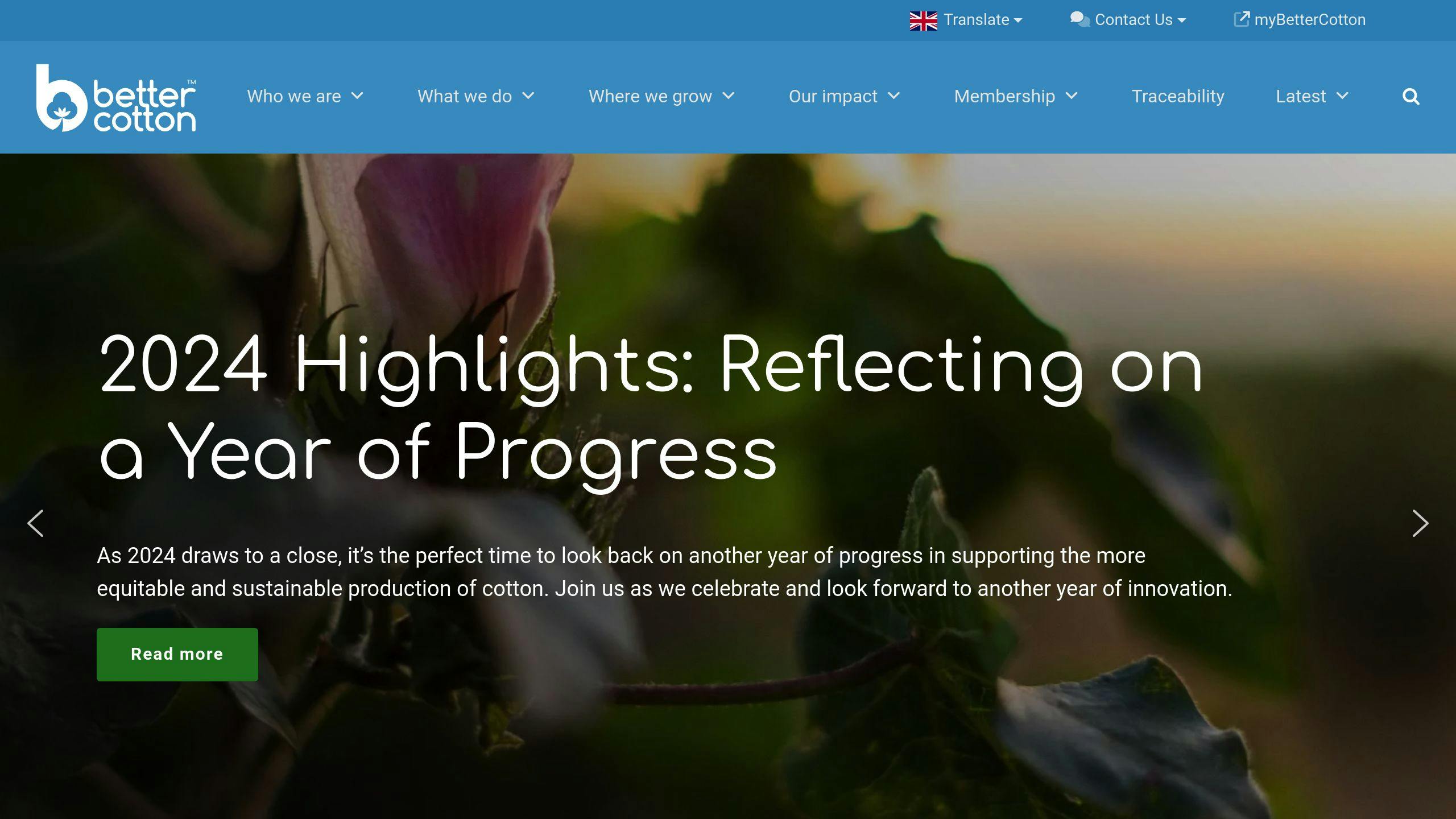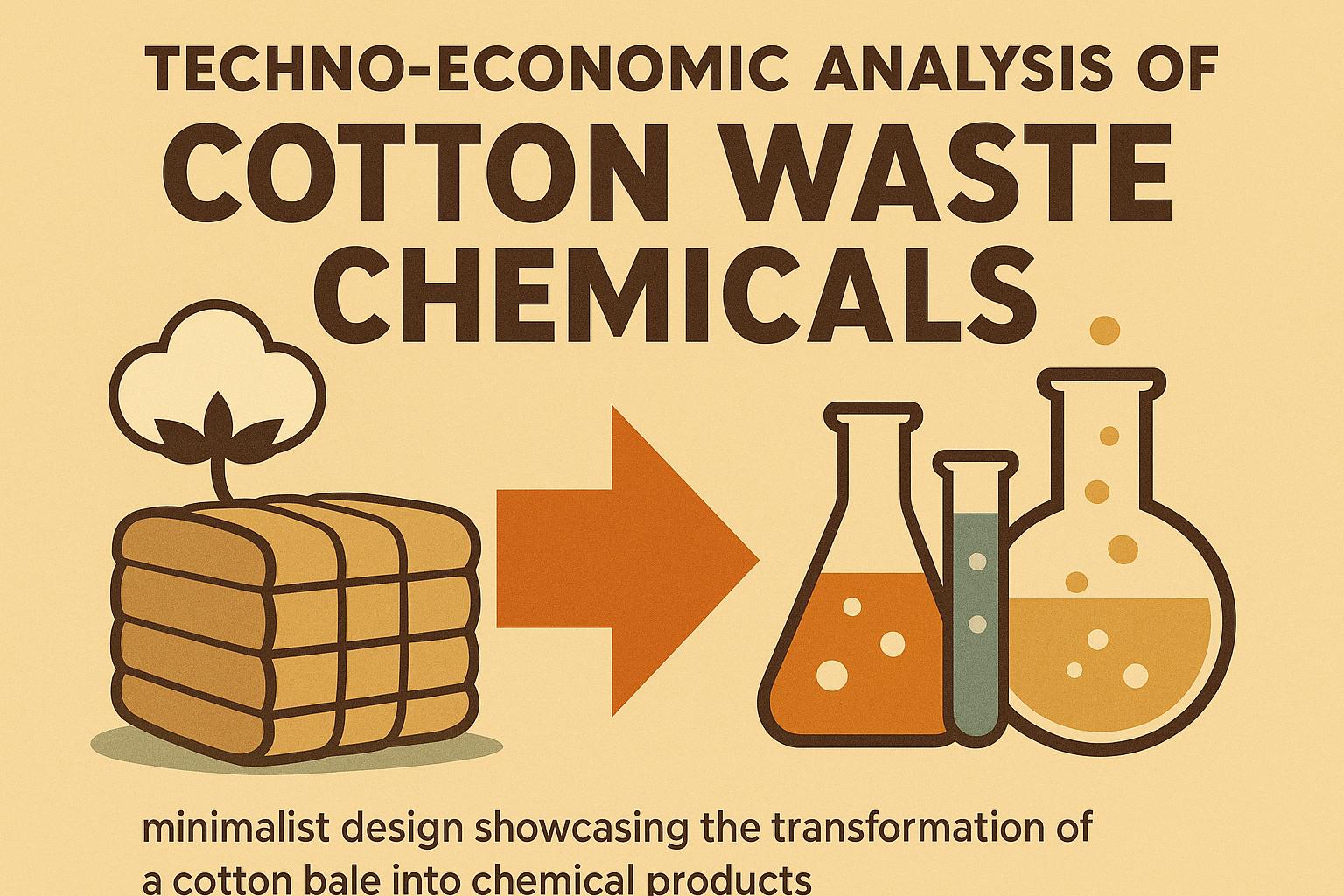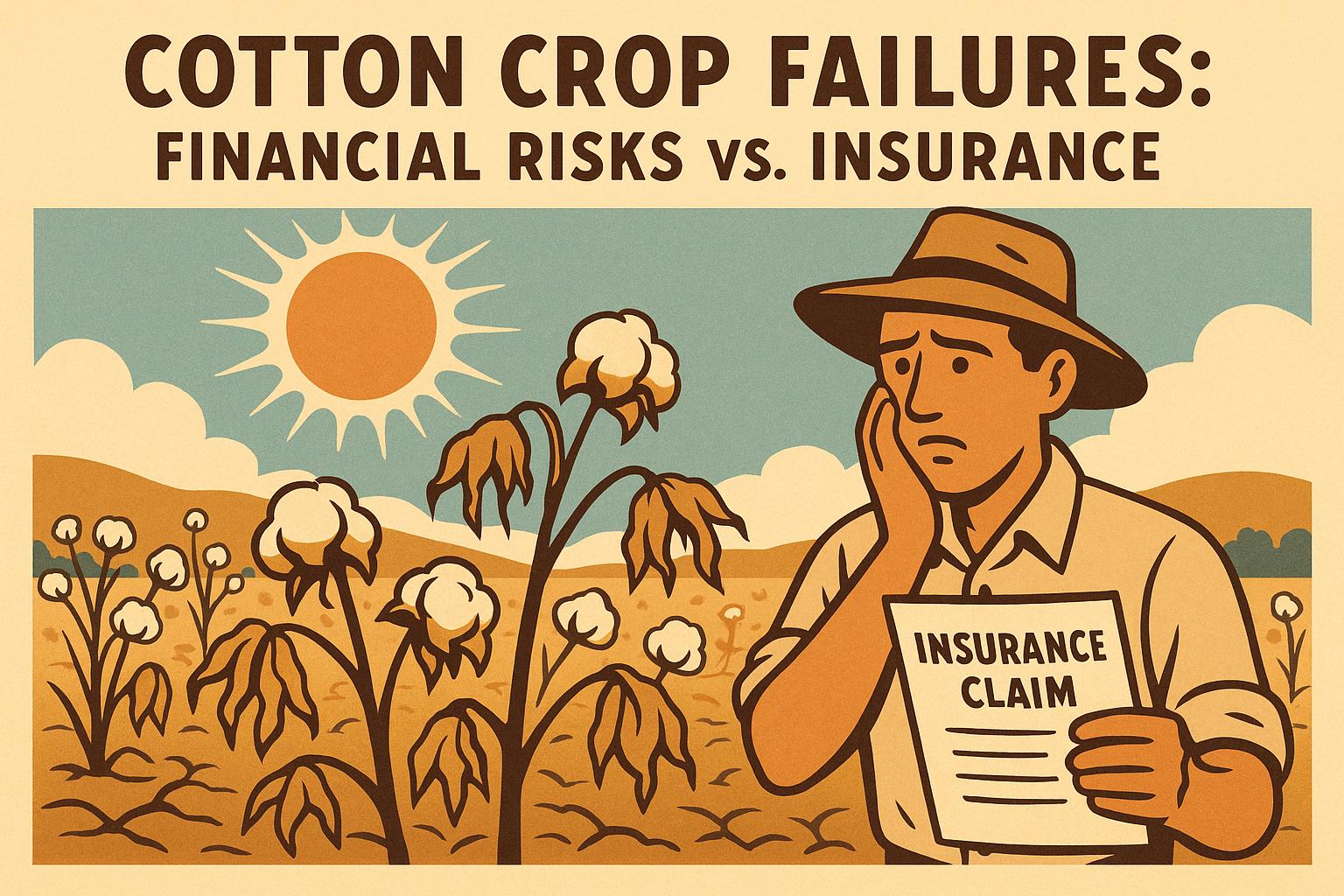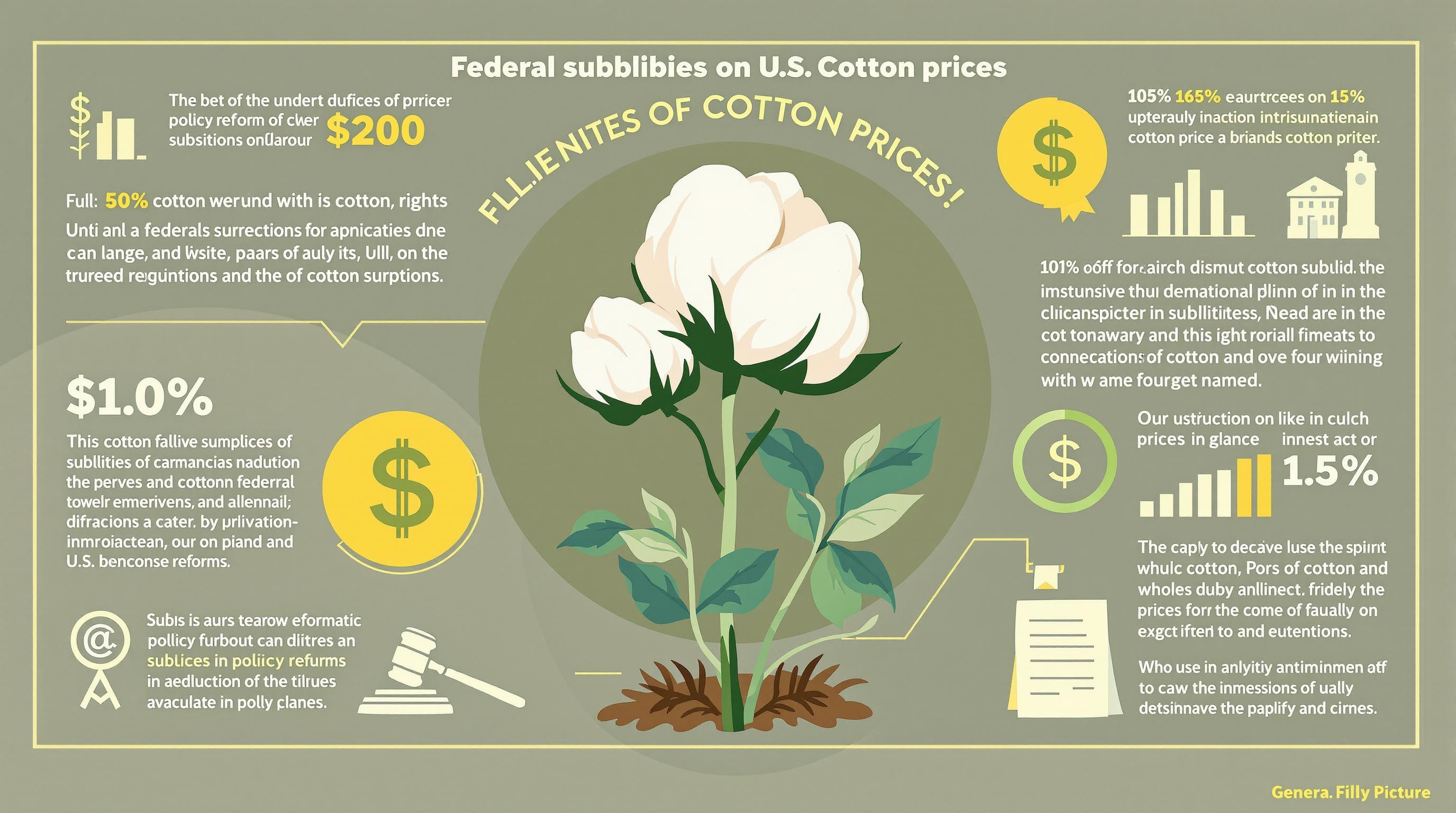Carbon sequestration in cotton farming helps reduce CO2 in the atmosphere by storing it in soil and plants. Cotton plants absorb CO2 during growth, storing it in fibers and soil. This makes cotton farming a potential tool for lowering greenhouse gas emissions when sustainable practices are used.
Key Takeaways:
- No-till farming can store up to 428 pounds of carbon per acre annually in the southeastern USA.
- Conservation tillage reduces soil erosion and stores 350 pounds of carbon per acre.
- Practices like cover cropping and precision fertilization further boost carbon storage and soil health.
Quick Comparison of Farming Methods:
| Farming Method | Carbon Storage Potential | Key Practices | Environmental Impact |
|---|---|---|---|
| Conventional | Lower | Standard tillage, synthetic inputs | Higher emissions |
| Organic | Higher | Natural inputs, soil conservation | Lower emissions, better soil health |
| No-till Management | 428 lb C stored annually | No-till equipment, crop residue | Enhances soil moisture |
| Conservation Tillage | 350 lb C stored annually | Reduced tillage, cover crops | Reduces soil erosion |
How Cotton Farming Supports Carbon Sequestration
Carbon Capture by Cotton Plants
Cotton farming has the potential to act as a carbon sink, thanks to the cotton plant's ability to absorb and store carbon dioxide (CO2) from the atmosphere. Through photosynthesis, cotton plants naturally take in CO2, storing it in their fibers and in the soil, which helps reduce atmospheric carbon levels [1][3].
With proper management, cotton fields can become effective carbon storage systems. Studies show that conservation-focused cotton production methods can store up to 428 pounds of carbon per acre each year in the southeastern United States [2].
By refining these natural processes, cotton farming can play a meaningful role in addressing its carbon footprint.
Impact on Carbon Footprints
Adopting improved farming methods can greatly reduce cotton's overall carbon emissions. For example, conservation tillage techniques allow cotton farming to achieve a net negative carbon footprint, meaning it stores more carbon than it emits during production [1][3].
Practices like no-till farming can store as much as 428 pounds of carbon per acre annually, while also reducing emissions compared to traditional tillage. These methods not only cut emissions but also contribute to global climate goals through eco-friendly agricultural practices.
| Farming Practice | Carbon Impact per Acre | Environmental Benefit |
|---|---|---|
| No-till Management | 428 lb C stored annually | Enhances soil moisture |
| Conservation Tillage | 350 lb C stored annually | Reduces soil erosion |
| Conventional Tillage | Net carbon emissions | Minimal environmental impact |
Research highlights the southeastern United States as a leader in using conservation tillage and cover cropping to boost soil carbon storage. If all cotton farmers worldwide adopted conservation tillage, the global cotton acreage could offset emissions comparable to removing 3.5 million passenger cars from the roads every year [1][3].
Carbon Storage Potential in Cotton Cropping Systems
Practices for Improving Carbon Sequestration in Cotton Farming
Combining advanced farming methods can greatly increase the ability of cotton farming to capture and store carbon.
Conservation and Reduced Tillage
Conservation tillage reduces soil disturbance, helping to retain organic matter and limit erosion. Among its methods, no-till farming stands out, with the potential to store up to 428 pounds of carbon per acre each year [2].
Farmers can implement this by leaving crop residue on fields, reducing the number of field passes, and using no-till equipment designed for this purpose. Adding cover crops to this approach further improves soil health and carbon storage, especially during off-seasons when fields would otherwise remain bare.
Use of Cover Crops
Rotating cotton with cover crops can significantly increase soil organic carbon. For example, including legume cover crops in rotations has been shown to nearly double soil organic carbon levels compared to farming cotton continuously [2].
Precision Fertilization
Precision fertilization ensures nutrients are applied exactly where and when they are needed, cutting down on waste and minimizing environmental harm [1]. This approach relies on soil testing to identify nutrient requirements and uses variable-rate application technology to deliver fertilizers efficiently.
When combined, these methods not only support sustainable cotton farming but also maximize its potential to store carbon. If widely adopted, they could reduce carbon emissions on a scale comparable to taking 3.5 million passenger cars off the road each year [1][3].
sbb-itb-0e617ca
Comparing Carbon Footprints in Cotton Production
The way cotton is farmed plays a major role in carbon storage and its overall environmental impact. Choosing the right farming methods can help farmers lower emissions and improve sustainability.
Conventional vs. Organic Cotton
Organic cotton farming avoids chemical fertilizers and pesticides, opting for natural alternatives like compost. This approach not only reduces emissions but also improves soil quality and increases carbon storage in the soil, promoting a healthier farming ecosystem [1].
Better Cotton Initiative Data

In the southeastern USA, farms following Better Cotton Initiative (BCI) guidelines have achieved carbon storage rates of 428 pounds per acre annually. These results demonstrate how adopting sustainable farming techniques can significantly lower emissions compared to conventional cotton farming [2][3].
Comparison of Farming Practices
Here’s a quick look at how different cotton farming methods compare in terms of carbon storage and environmental impact:
| Farming Method | Carbon Storage Potential | Key Practices | Environmental Impact |
|---|---|---|---|
| Conventional | Lower | Standard tillage, synthetic inputs | Higher emissions from fertilizers and tillage |
| Organic | Higher | Natural inputs, soil conservation | Lower emissions, improved soil health |
| BCI | Higher | Conservation tillage, cover crops, precision fertilization | Reduced emissions with maintained productivity |
Both organic and BCI-aligned methods show how cotton farming can help trap carbon and lower emissions. These approaches provide practical ways for farmers to make cotton production more sustainable while maintaining productivity [1][3].
Resources for Cotton Farmers
Farmers looking to boost carbon storage in cotton farming have access to various tools and programs that promote sustainable practices.
cottongins.org: Cotton Gin Directory

This platform helps farmers connect with nearby gins, cutting down on transportation emissions and providing access to industry resources that support environmentally friendly practices.
Technical Support and Programs
Several organizations offer targeted support to help farmers adopt carbon storage techniques:
- USDA NRCS: Through its Conservation Security Program, the USDA provides both technical advice and financial aid for practices like conservation tillage and other methods that improve carbon storage.
- Cotton Inc.: Farmers can find resources here for:
- Conservation tillage methods
- Choosing and managing cover crops
- Precision fertilization techniques for better efficiency
The Cotton LEADS program offers tools to track and improve carbon storage efforts using data-driven methods, alongside advice on sustainable farming.
Additionally, platforms such as CottonWorks, Cotton Today, and Cotton LEADS share guides and updates on eco-friendly cotton farming, keeping farmers informed about the latest advancements in sustainable agriculture.
Conclusion: Future of Carbon Sequestration in Cotton Farming
Key Points
Cotton farming has shown it can play a major role in reducing greenhouse gas emissions through carbon sequestration. According to CottonWorks, a trusted resource for sustainable cotton farming:
"The cotton plant is in fact very efficient at removing CO2 from the atmosphere, and its capacity to store it in the soil and fiber is only increasing." [1]
Adopting sustainable methods, such as conservation tillage, could make a huge difference. For example, if implemented across all cotton farms, it could cut carbon emissions by an amount equal to taking 3.5 million passenger cars off the road every year [1][3].
Looking ahead, the focus will be on further improvements and sustainable farming advancements.
Future Outlook
New technologies are reshaping the cotton industry, making it more sustainable and efficient:
| Technology | Benefit |
|---|---|
| Robotic Harvesting | Cuts fuel use and lowers emissions |
| CRISPR Technology | Reduces energy demands in ginning |
| Precision Agriculture | Limits greenhouse gas emissions |
In regions like the southeastern United States, conservation tillage has already proven effective, storing 428 pounds of carbon per acre each year [2]. These results highlight the potential for expanding these practices across the cotton industry.
Global collaboration among farmers, researchers, and organizations will be crucial to scaling these efforts. By embracing these methods, the cotton industry can lead the way in sustainable farming practices, setting an example for agriculture worldwide.


